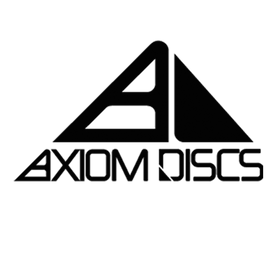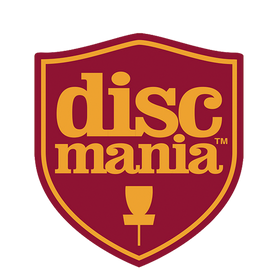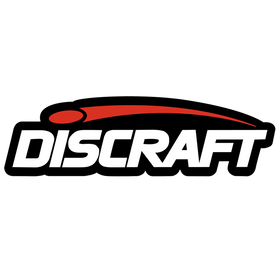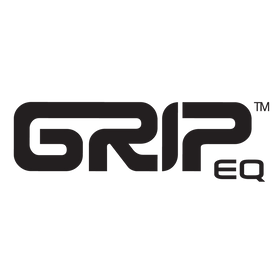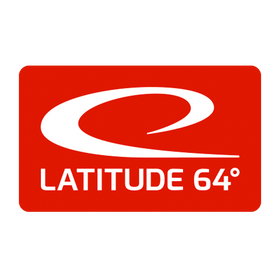What is disc golf?
Facts about disc golf
Disc golf is about having as few throws as possible from point A to B with a disc or frisbee. Very similar to regular golf.
The disc is thrown from a tee and the goal is to make the disc land in a basket for completing a hole. After the first throw from the tee, the disc is picked up where it landed and the next throw is thrown towards the basket. When the disc lands in the basket, the number of shots you threw from the tee is counted. There are many obstacles on the way such as trees, bushes, rocks and heights and it can therefore be a very challenging throw that is performed.
Disc golf is often referred to as frisbee golf and disco golf. Disc golf is the real name.
Disc golf is usually played on courses located in city parks and forests and is free to start whenever you want unless it is a competition.
Who can play disc golf?
Disc golf is for all people regardless of age, gender, young or old, rich or poor. It's always easy to get started.
Different types of discs
There are different types of disc golf discs to more easily adapt the game where you throw from. The main discs are putter, midrange, fairway driver & distance driver. Putters are for short distances and therefore have better flying ability at lower speeds. Midrange is for intermediate distances where more flight is needed than a putter and yet less than a driver. Drivers are divided into two segments where fairway drivers are for long throws and distance drivers are for very long throws.
What do the numbers on the discs mean?
All discs have different flight patterns. Some turn left, some right, some fly upwards more easily and some dive down more easily. The flight pattern can be read from the disc's characteristics, which are printed on the disc. The properties are graded in Speed, Glide, Turn & Fade, most easily translated into Swedish by Speed, Glid, Turn and End. Feel free to learn more about the disc properties here.
S=Speed , G= Glide, T= Turn, F= Fade
How to play disc golf?
Disc golf rules in brief
-The first throw is drawn in the order in which it is played by the players
- Where the disc lands, the next throw must be thrown
-The foot may cross the line from where it is to be thrown after the disc is released
-If it is less than 10 meters from the basket, the foot must not cross the line after the disc is released
-The player with the least number of throws from the tee until the disc is in the basket wins. If two or more players have the same number of throws, a playoff is played between those players on any hole until a winner is decided.
See the entire rulebook here and read more about the PDGA, which provides the rules, below.
Disc golf courses
Disc golf courses are usually 9, 18 or 27 holes. The location of the courses is variable, usually they are located in the forest, city parks, or run through forest and partially open fields. The length of the holes can be between 50-300 meters. The holes can have OB lines or mandatories. OB lines mean that the disc must land within the instruction otherwise the disc must be thrown where it exited and players get an extra throw. Mandatory means that the disc must be played on, for example, the specified side of a tree. If thrown on the wrong side, the player gets an extra throw and the disc must be thrown from the drop zone.
The difficulty of the course depends on the vegetation, length and height, among other things. The vegetation can, for example, include trees or large bushes that are thrown around or over. Weather and wind are also factors that affect the difficulty, where wind in particular causes the disc to fly differently. This is also where the need for different discs emerges.
Common equipment to have in disc golf
Common equipment to have disc golf is:
- Discs
- Putter
- Midrange
- Fairway drives
- Distance drivers
- Bag
- Mini markers/Marker
- Towel
- Score card/Disc golf app
PDGA
The PDGA is the International Disc Golf Association.
Professional Disc Golf Association
PDGA has more than 50,000 active members in more than 54 countries. In addition, there are more than 8,000 disc golf courses around the world connected.
Rating system
The PDGA administers the international rating system for disc golf. You get a rating as a player by participating in PDGA approved competitions around the country and the world. Depending on how good you throw on the course you are and in relation to how the others play at the competition, you will receive a rating. Rating is compared against ban rating called SSA, Scratch Scoring Average. Players who play below SSA will receive a rating of over 1000. Players who play above SSA will receive a rating below 1000.
The TDn (Tournament Director) who leads the competition sends in the results after the competition and shortly all players will receive their updated rating. Your overall rating is based on an average of the most recently played rounds.
Read more about rating on PDGA's rating page .
The Swedish Disc Golf Association
Sweden's own disc golf association is the Swedish Disc Golf Association. They operate directly under the Swedish Frisbee Sports Association. For example, they run competitions such as NT, the National Tour and the Swedish Championship and also manage the national team in disc golf.
The website of the Swedish Disc Golf Association
Disc golf glossary
Ace = The disc is thrown into the basket on the first throw
Anhyze = The disc is thrown with an inclination to the right if you are a right backhand thrower
Backhand = The disc is thrown with a long pull backwards, on the opposite side to which the disc is held.
Distance driver = Disc used for the longest throws
Drop-zone = Specified place from which the disc is played when it has left the track
Dome = Dome top
Fairway driver = Disc used for long throws
Forehand = The disc is thrown on the same side you are holding and thrown away with a flick.
Frisbee golf = Disc golf is often referred to as frisbee golf. It is the same thing.
Mini-marker = Marker that is placed where the disc landed and the next throw is thrown from
Grip-lock = The disc is held too long, gets stuck in the hand and is released too late
Hazard = Prohibited area which is penalized with an extra throw. The disc is played from the location where it is located
Hyze = The disc is thrown with an inclination to the left if you are a right-handed backhand thrower
Mandatory = Marking that the disc must go inside. Often indicated by arrow
Midrange = Disc used for mid-range throws
OB- Out of bounds = Outside the lane, gives a penalty if the disc lands OB. The disc is played from where it exited or the specified drop zone
Pop-top = The disc makes a "popping" sound when the top side is pushed in
Putter = Disc used for close play
Rim = The edge on the underside of the disc that creates the grip
Tee = Draft place
Draft = First place where the first throw is thrown from.

